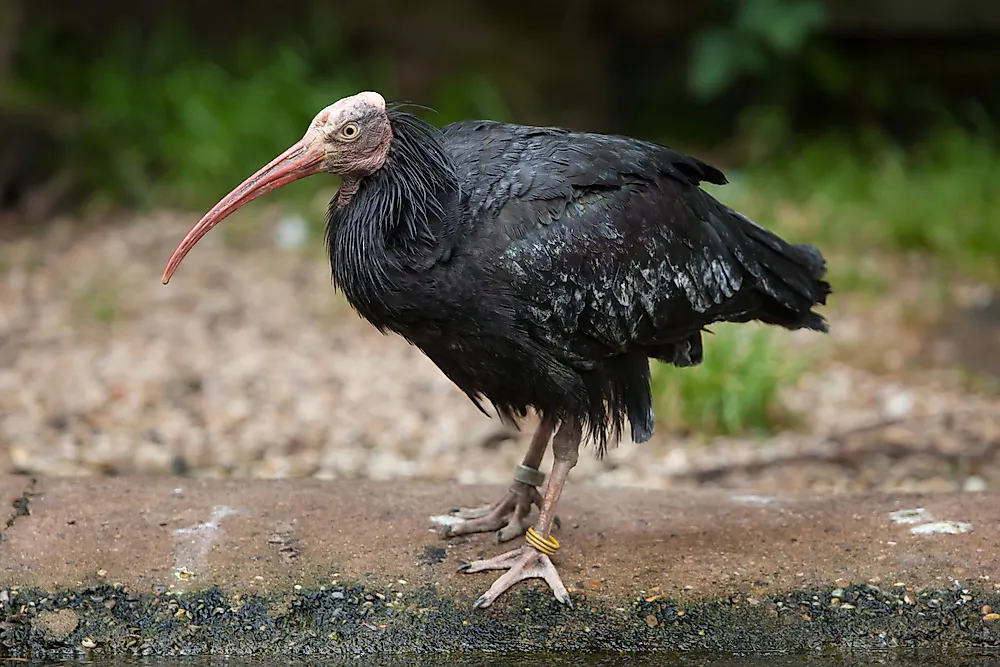What is the National Bird of Syria?

The northern bald ibis, also known as the waldrapp or the hermit ibis, is the national bird of Syria. The bird is endemic to Northern Africa, Central and Southern Europe, and the Middle East, but the wild population is now considered extinct in Europe. This ibis is listed as a critically endangered bird with a population of fewer than 500 birds in the wild. The largest population of the northern bald ibis is found in Morocco while less than 10 are found in Syria. The bird was considered extinct in Syria until 2002 when it was rediscovered. It holds the status of the official bird of the country because it is native, endangered, and is thought to have religious significance. Muslims believed that the bird migrates to Mecca each year to Hajj with the pilgrims.
Description of the National Bird of Syria
The northern bald ibis is a large bird with a wingspan of between 49 and 53 inches and weighs between 35–46 oz. It has a black plumage with violet and bronze-green iridescence. The bird has a dull red and unfeathered head while its beak is long and curved. The sexes have similar plumage but the males are slightly larger than the females.
Northern Bald Ibis Population In Syria
The northern bald ibis was declared extinct in Syria until 2002 when a small population was rediscovered in the wild. Between 2002 and 2004, conservationists made significant efforts to increase the population. During this period, about 14 chicks were fledged successfully. The conservation efforts in the Palmyra Desert were hindered by the low survival rate among the chicks. Hunting and electrocution resulted in the deaths of infants as the older birds migrated to Saudi Arabia and Ethiopia. Conservationists began raising chicks in captivity and introducing them to wild colonies as adults. All conservation efforts were halted when the Syrian war began in 2011 and since then the population of the northern bald ibis has dropped significantly to less than 10 birds. No bird was been seen in the country in 2014 and 2015 but a colony of nine birds was seen in 2017.
Cultural Significance of the Northern Bald Ibis
According to legends, the ibis was the first bird to be released from Noah’s Ark because it represented fertility. The bird was therefore considered of religious benefit to humanity and it was for this reason that the wild population in Turkey survived longer than the rest of Europe. In Egypt, the northern bald ibis was revered as a symbol of splendor and brilliance. The Egyptian god Thoth was depicted with a head of an ibis and a human body. Historian Herodotus documents a mythic man-eating Stymphalian bird with a sharp curved beak and a long wingspan that could unleash fire on its enemies. Several paintings suggest that Herodotus based his mythical creature on the northern bald ibis. Postage stamps in Yemen, Turkey, Syria, Morocco, Algeria, and Sudan bare the portrait of the northern bald ibis to signify its importance to the Muslim culture.











